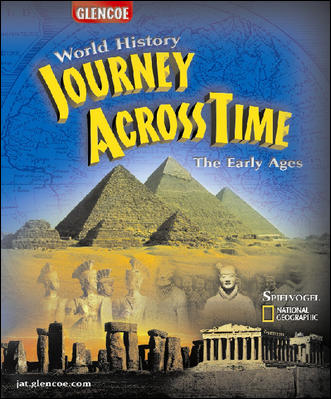Journey Across Time: The Early AgesChapter 8:
The Rise of RomeWeb Activity Lesson PlansIntroduction
Like many great nations, the birth of Rome was the result of a power struggle. In 509 B.C., Romans rebelled against the Etruscans, founding the Roman Republic. As you learned in this chapter, the Roman Republic grew in size as it conquered neighboring territories. Roman soldiers played an important role in the country's success and expansion. They were disciplined soldiers, tough fighters, and practical problem solvers. In this activity, you'll learn more about the Roman soldiers, called legionaries. Visit the BBC site The Romans to learn about the life of the Roman soldier, his weapons, and more.
Destination Title: The Romans Lesson Description
Students will learn about the Roman soldier from this BBC site. They will gain an understanding of what it was like to be a Roman soldier, on a regular basis and in battle. Students will take a short online quiz to test their understanding. Then they will answer four questions about what they've learned. They will apply what they've learned by creating a Venn diagram, comparing the Roman soldier to the U.S. soldier.
Instructional Objectives - Students will describe what it was like to be a Roman soldier.
- Students will analyze the differences and similarities between the Roman legionary and the U.S. soldier.
Student Web Activity Answers - The Roman army consisted of roughly 30 legions.
- The pilum was constructed with sharp iron points and softer metal shafts behind it, so that when the spear hit an enemy's shield it bent, making it very difficult to pull out. The spear shaft would drag on the ground and cause the person to trip up and lose his shield.
- A Roman soldier was required to march 20 miles per day, wearing armor and carrying equipment.
- The Roman legions carried "standards" to show who they were. These standards included the famous Roman eagle. In addition, they carried a portrait of the emperor.
- Answers will vary. Similarities may include the following: discipline, state-of-the-art weapons, and strongest army of the time. Differences may include the following: women soldiers, amount of time required to serve, and method of attack.
 | 




